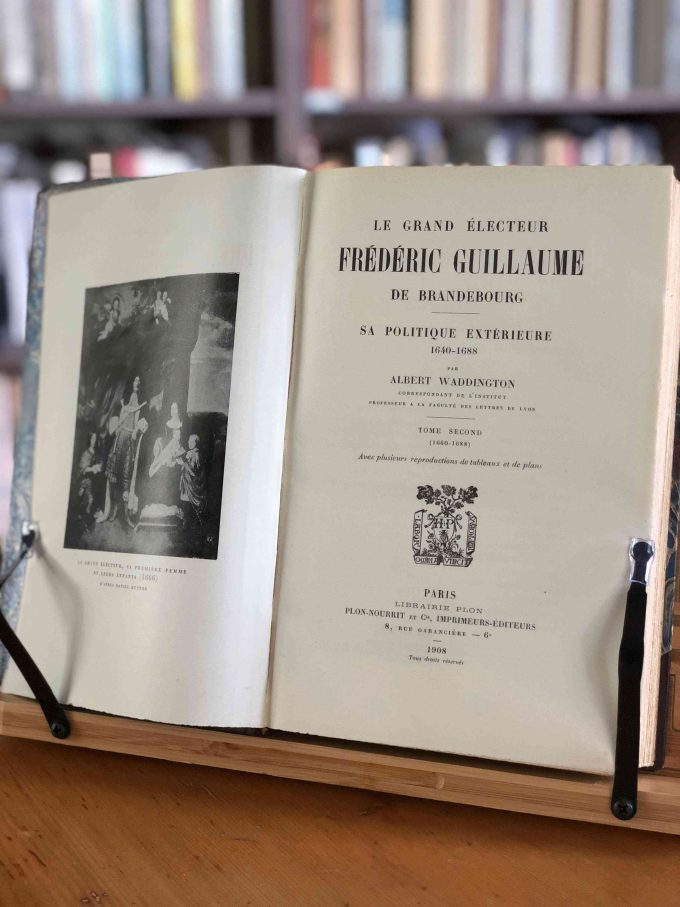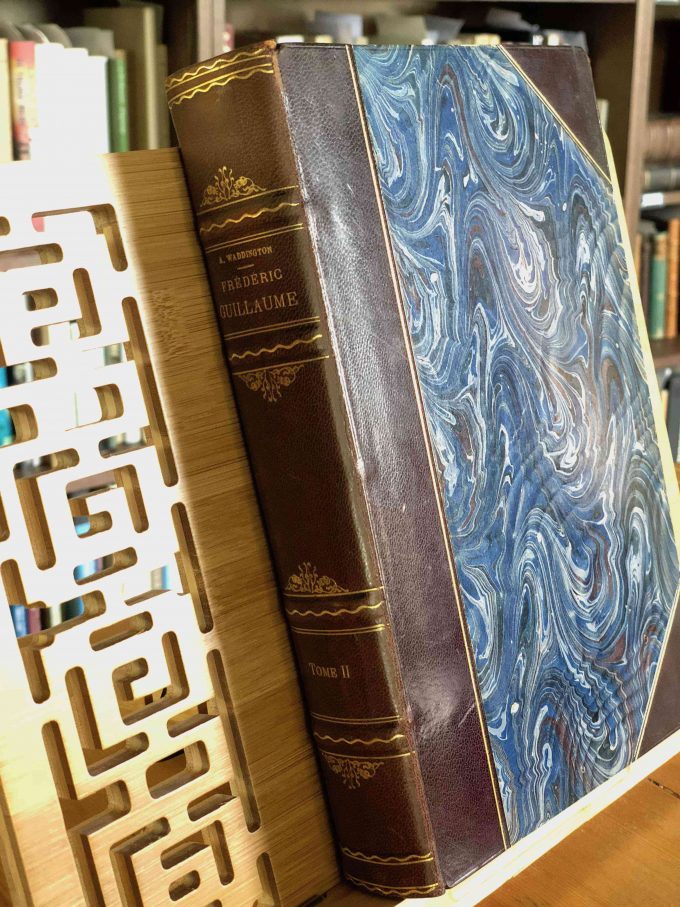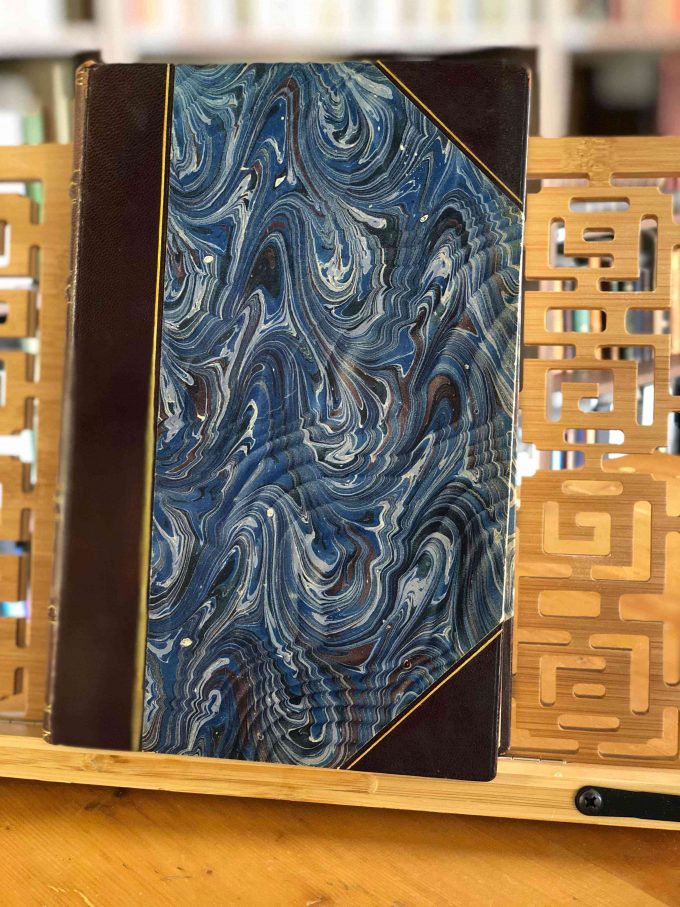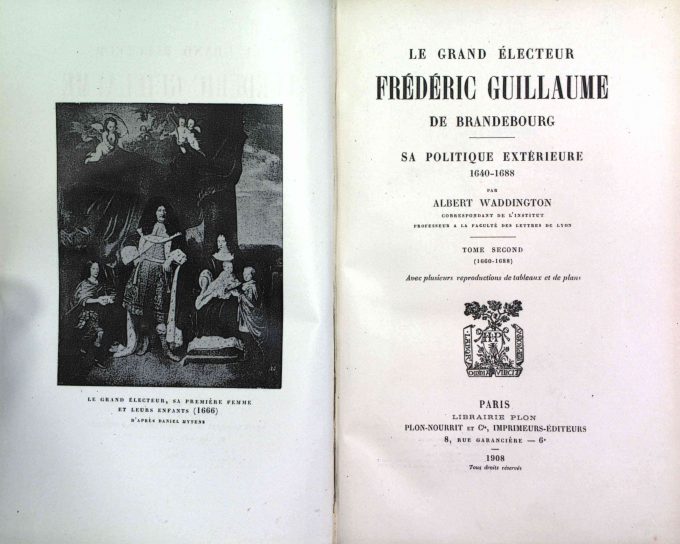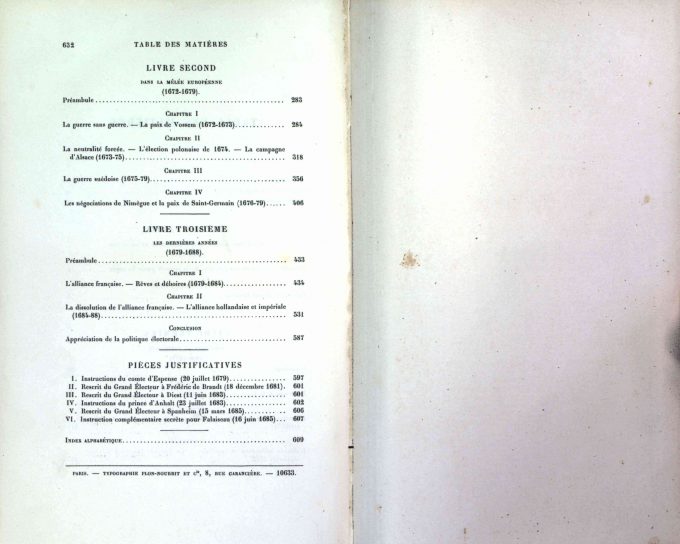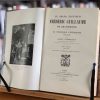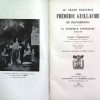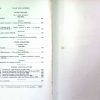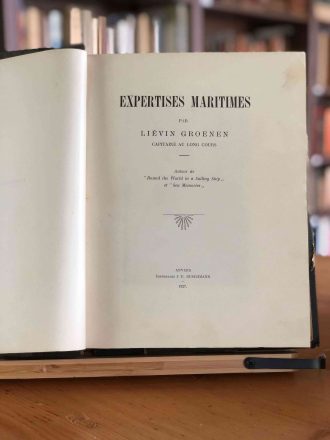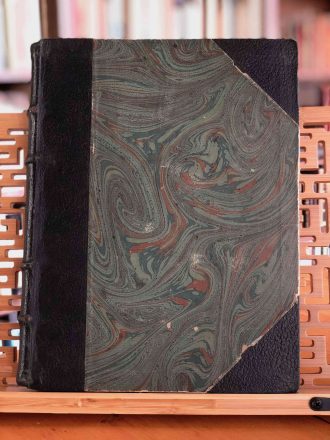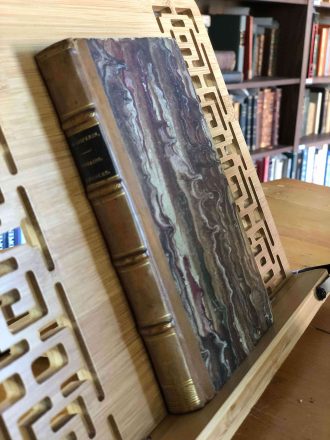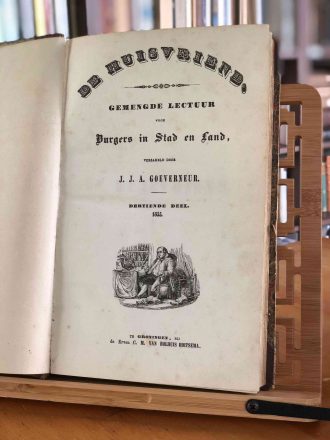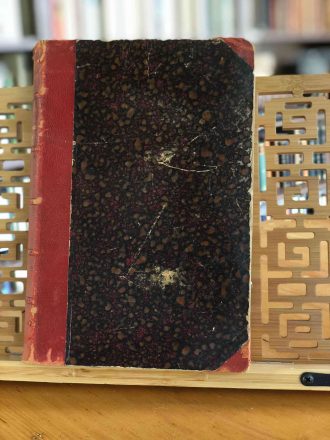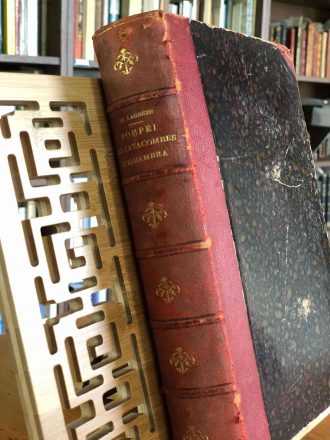Français:
Le grand électeur Frédéric Guillaume de Brandebourg. Sa politique extérieure 1640-1688 par Albert Waddington est une étude historique approfondie de la politique extérieure de Frédéric Guillaume de Brandebourg, également connu sous le nom de “Grand Électeur”. Ce tome second, couvrant les années 1660 à 1688, a été publié en 1908 par la Librairie Plon à Paris et imprimé par Plon-Nourrit et Cie, Paris. L’ouvrage comprend 632 pages et mesure 24 cm sur 16 cm.
Ce volume est enrichi de plusieurs reproductions de tableaux et de plans, offrant un contexte visuel précieux pour les événements et les personnages décrits. L’ouvrage se distingue par sa rigueur académique et son approche détaillée, reflet du travail de Waddington en tant que correspondant de l’institut et professeur à la faculté des lettres de Lyon.
Albert Waddington, historien et académicien respecté, a apporté une contribution significative à l’étude de l’histoire européenne avec cette biographie exhaustive de Frédéric Guillaume. Le Grand Électeur, qui a régné de 1640 à 1688, est reconnu pour ses efforts visant à renforcer et à moderniser la Prusse, notamment à travers une politique étrangère ambitieuse et stratégique.
Waddington analyse en détail les alliances diplomatiques, les conflits militaires, et les initiatives politiques de Frédéric Guillaume, offrant un aperçu nuancé de ses motivations et de ses réalisations. Le livre est également une ressource précieuse pour comprendre le contexte géopolitique complexe de l’Europe du XVIIe siècle.
En résumé, Le grand électeur Frédéric Guillaume de Brandebourg. Sa politique extérieure 1640-1688 est une œuvre essentielle pour les historiens et les amateurs d’histoire, fournissant une analyse approfondie et bien documentée d’une figure clé de l’histoire européenne.
English:
Le grand électeur Frédéric Guillaume de Brandebourg. Sa politique extérieure 1640-1688 (The Great Elector Frederick William of Brandenburg. His Foreign Policy 1640-1688) by Albert Waddington is a comprehensive historical study of the foreign policy of Frederick William of Brandenburg, also known as the “Great Elector.” This second volume, covering the years 1660 to 1688, was published in 1908 by Librairie Plon in Paris and printed by Plon-Nourrit et Cie, Paris. The book consists of 632 pages and measures 24 cm by 16 cm.
This volume is enriched with several reproductions of paintings and maps, providing valuable visual context for the events and figures described. The work is distinguished by its academic rigor and detailed approach, reflecting Waddington’s role as a correspondent of the institute and professor at the Faculty of Letters in Lyon.
Albert Waddington, a respected historian and academician, made a significant contribution to the study of European history with this exhaustive biography of Frederick William. The Great Elector, who ruled from 1640 to 1688, is recognized for his efforts to strengthen and modernize Prussia, notably through ambitious and strategic foreign policy.
Waddington provides a detailed analysis of Frederick William’s diplomatic alliances, military conflicts, and political initiatives, offering a nuanced insight into his motivations and achievements. The book is also a valuable resource for understanding the complex geopolitical context of 17th-century Europe.
In summary, Le grand électeur Frédéric Guillaume de Brandebourg. Sa politique extérieure 1640-1688 is an essential work for historians and history enthusiasts, providing an in-depth and well-documented analysis of a key figure in European history.
